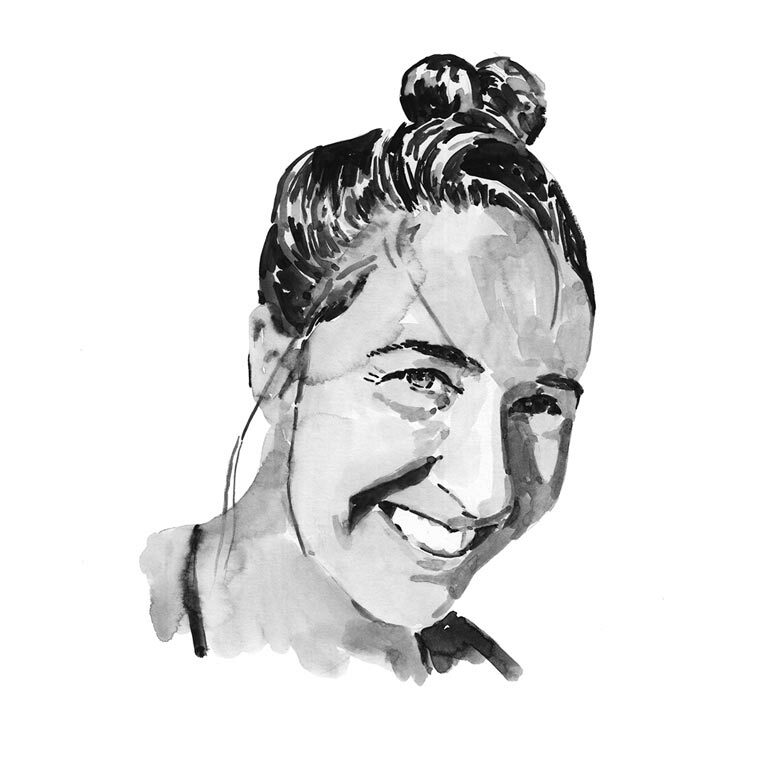Carolina de la Hoz Schilling

Who I am
I grew up in Madrid, nowhere near the sea. When I was young I had nightmares about sharks in our swimming pool and was afraid to venture into the ocean because of my unfounded but nonetheless terrifying fears. Unbeknown to me at the time, it was these fears that would fuel my scientific curiosity when I later attended the University of Innsbruck to obtain an undergraduate degree in biology. While a student I decided to become a certified scuba diver – and then everything snowballed. My first encounter with a shark under water was nothing short of magical! I gained practical experience in shark research as an intern at the Bimini Biological Field Station and at the Shark Project run by the Charles Darwin Foundation in the Galápagos Islands. Over a short period of time I transitioned from my former nightmare to a new nightmare: the excruciatingly sad reality of global shark and ray exploitation and the widespread popular misconceptions and misjudgements about them.
While studying at the University of Algarve in Portugal I got a chance to visit Mauritania, a country that had never featured on my travel list, and instantly fell in love with it. There the research for my thesis focused on an initial exploration, using environmental DNA, of shark and ray diversity in the protected area of Banc d’Arguin. I quickly realised that a lot more work needs to be done to discover all the potential of this region and to help provide resources to better protect local shark and ray species before population declines become irreversible.
Where I work
The project is located in Mauritania, and more specifically on the Banc d’Arguin, a large, shallow bay comprising mainly intertidal sandbanks, mudflats, intricate channels and several dispersed islands. The area became part of the Parc National du Banc d’Arguin, the largest marine protected area in western Africa, which was created in 1976 and has since been recognised as a wetland of international importance by the RAMSAR Convention and as a UNESCO World Heritage Site. Due to its oceanographic and topographic characteristics, Mauritania constitutes a natural boundary for southern and northern distribution limits of various shark and ray species. Shark and ray diversity is therefore high and species occur in unique combinations. The region is also believed to be an important pupping and nursery area for many species. This applies especially to the Banc d’Arguin, whose sheltered and shallow nature and extensive sea-grass beds offer the protection that many sharks and rays seek, especially in their juvenile stages.
The communities of indigenous fishers who live inside the boundaries of the national park, the Imraguen, hold exclusive fishing rights within the marine protected area. Also, fishing for most shark and ray species has been officially banned since 2003. At the time, efforts were directed at getting rid of nets that specifically targeted sharks and rays. However, what was supposed to be a sustainable subsistence fishery has since developed into a largely illegal and mostly unreported or underreported shark and ray trade that has been difficult to manage due to a lack of resources and management capacity.
What I do
The initial stages of this project focus on understanding species diversity in the Banc d’Arguin by means of molecular as well as morphological methods. This involves going out in the field, mainly to local shark and ray processing and trading sites where landings from industrial and small-scale fisheries are often taken for salting, drying and packing. However, we also visit landing sites at Imraguen villages. Tissue samples, length measurements and photographs are collected from all species and ideally from specimens that are still fresh. I will use tissue samples to extract and amplify DNA, which will help to identify species and/or determine where species should be placed in taxonomic and phylogenetic terms. In addition, regional collaborators may be engaged to encourage local people to work together to build a comprehensive species list that can be verified by means of a combination of genetic markers. Landing reports of sharks and rays in Mauritania and the Banc d’Arguin, as is often the case in developing countries, seldom identify catches to species level. This is often associated with a lack of proper training for observers in identifying species. However, in a region where species face a higher than average risk of extinction, being able to correctly identify and report species caught in fisheries is important for carrying out accurate population assessments, determining the regional conservation status of individual species and implementing appropriate conservation measures, especially for species that are threatened with extinction or are highly vulnerable to increasing fishing pressure.
